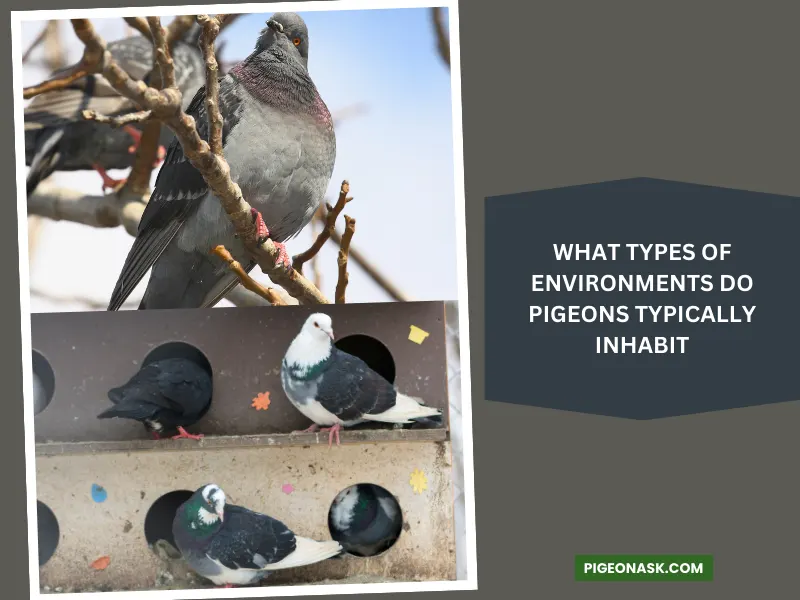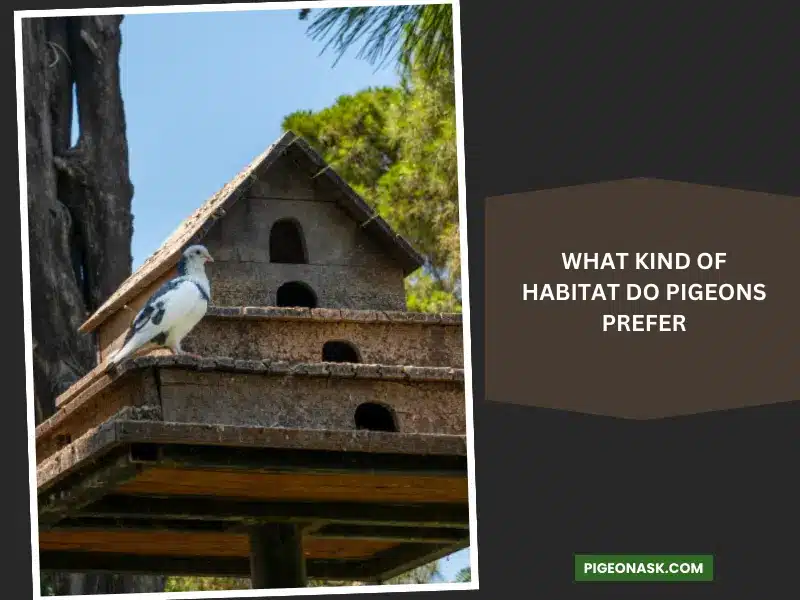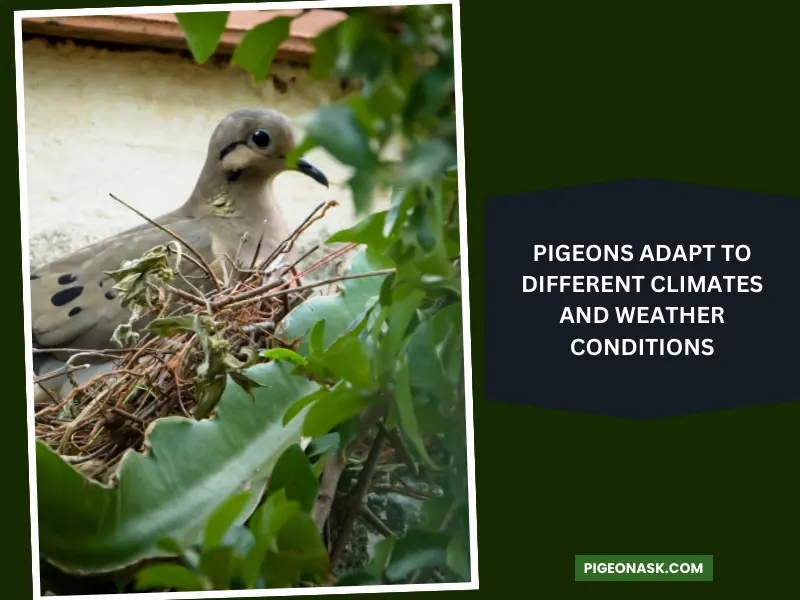Where Do Pigeons Live?
If you live in a busy metropolitan like New York City or Rome, you’re bound to come across our gray feral pal almost at every corner. Always appearing out of the blue, cooing, and bobbing their little heads for food. Big or small, cities just never seem to have enough of the pigeons.
Which might make you wonder, where do pigeons live? While they’re often spotted in public areas like the square, tourist spots, or parks, they don’t usually live there. These pigeons’ nests are more likely to be on the roofs and ledges of the top buildings.
However, this just explains the situation of the flocks roosting and loafing around the signature city places, which is by their own will, of course. But then there are those in the countryside and domestically bred. The nesting situation can vary depending on various factors.
Want to learn more about pigeon habitats:
What Types of Environments Do Pigeons Typically Inhabit
While pigeons originally started out as rock doves many centuries ago in the coastal regions, through time, they became more of an inland species to be near human areas.

Although they love the homes of humans, their living conditions do vary on what type of pigeon we’re talking about.
Ledges and under the bridge might be ideal for feral ones, but you’ll spot the truly wild ones only in coastal areas, dividing the nesting places into two prime types: 1. Natural and 2. Man-made.
01. Natural Habitat
Let it be woodlands, countryside, or even in the city; you’ll find feral or inland pigeons still choosing the trees and the fields to build their next resting place.
Urban Areas
Pigeons living in urban areas usually build nests on structures made by humans, but you’ll find some flocks residing in nature as well.
Feral pigeons don’t usually live like that. Thanks to the massive emergence of the woodland kind, you’ll find the streetside trees and parks occupied by pigeons.
Rural Areas
Wild pigeons prefer nesting on cliffs, so they’re usually spotted over there in rural or coastal areas.
The inland pigeons prefer the countryside, thus nesting around barns, yards, and on trees. Shrublands, wetland trees, forests, and woodlands are the prime spots for woodland pigeon habitat.
Open Fields
Pigeons don’t usually build their nests on open fields, but it’s one of their favorite places to walk about. They come to the fields mainly for food.
However, either because of the abundance of food or safety, you might find inland pigeons building resting places close to open fields.
02. Man-Made Environment
Being near the humans meant complete assurance of food and shelter. And their calculation was definitely not wrong. The location is a lot safer, with plenty of food and, most importantly, countless places to rest.
Humans made it that easy for the pigeons! Inland birds in the countryside barns, mills, and domestic ones in the homes built especially for them.
And let’s not even start with the feral pigeons; they’re more local to big cities than the people living there for generations.
Roofs and Ledges
Go to NYC, Paris, Rome, or Bangkok; you’ll spot a pigeon in the ledges and roofs of most buildings. And it’s not just these cities, but almost every other big city where pigeons exist.
They prefer roofs and ledges over anything else man-made. The height and the structure make them feel like they are living on the edge of a cliff.
Adopted Homes
Domestic pigeons don’t have to build their home; their owners do it for them. These pigeons are kept and bred in pigeon lofts. These lofts are built to keep all pigeons’ food, mating, resting, and roosting needs in mind.
Structures and Buildings
While ledges and rooftops are pigeons’ favorite spots, you’ll find them actually anywhere else if the location fits the bird. This is why pigeon nests can often be found on the balconies of apartments, big cracks in the wall, behind the gargoyles, or under the bridge.
You can read our article about “Pigeon Habitat“
What Kind of Habitat Do Pigeons Prefer?
If the goal is to live close to humans, which is why they’re always soaring around the buildings, what does that say about their living preferences?

It explains why the big cities are full of feral pigeons and why they seem to be more in number than the wild or woodland kinds.
They started out as coastal cliff birds, but since centuries of domestication and migration, the preferences are now more diverse than ever.
Most Preferred Habitat of Pigeons
While few species choose to mate in the woodlands or feel safe in the embrace of the wild, most species would prefer to be something that assures safety and good shelter.
Thus you see them mostly in the barns or mills of the countryside or in busy cities. However, when it comes to preferences, are pigeons more likely to live in urban or rural areas?
Pigeons love city air more than the countryside. The surveys done on pigeon population will disagree, but the on-sight scenario shows a completely different scene. You’ll see flocks and flocks of pigeons in cities in massive bulk. The reasons are –
- Urban areas offer more structures that resemble cliffs or are deemed safer for resting and mating.
- Food is easier to find, and predatory animals are less likely to be around their favorite spots.
- Urban buildings offer better shelter against natural threats like storms and winter.
What Types of Structures Do Pigeons Typically Nest In?
From the past habit of nesting on cliffs, city pigeons prefer rooftops, high ledges, and gargoyles for the shelter. Even in the countryside, you’ll find the wild ones nesting on top of barns or mills due to the same evolutionary trait.

How Do Pigeons Adapt to Different Climates and Weather Conditions?
Pigeons do pretty well in different climates and weather conditions. They can’t cope in extreme heat, and it’s hardly a problem in the places they build nests. And the insulation ability of their extremely thick feathers works like a charm in difficult winters.

Their migration habits explain a lot when it comes to the question of their adaptability to weather changes and extreme conditions.
1. Migration Patterns
Pigeons are not like other birds in sense of migration. Since the beginning, their feathered structure has helped them to cope in low temperature, making it easy to survive the winter without needing to migrate to the south.
Also, due to the nature of their mating, it’s difficult for them to leave their nest and migrate for a long time.
2. Seasonal Migration
Pigeons don’t do seasonal migration. The only exception is the wild pigeons. Some Band-tailed pigeons might migrate to California or as far as Guatemala, but not much far.
That’s not applicable for Band-tailed pigeons living in places like Vancouver or Seattle either; those birds can easily comply with the drop in the temperature.
3. Inter-Regional Migration
They don’t migrate when the weather changes, so leaving the country is out of the question; unless we’re talking Band-tailed pigeons, who also don’t seem to migrate beyond the borders of South America.
Pigeons mate and breed all year round. So it’s way too difficult for them to make a yearly trip to the south and nurture the babies.
Conclusion
So, where do pigeons live? In short, we can say that almost anywhere humans live or can offer them a safe space.
There you have it! Create a safe heaven for the pigeon where they have enough water and food, and the cats can’t reach them. And be friendly! Pigeons are smart, they’ll remember how much of a parent you’ve been to them.
Want to learn more about the pigeons? Check out our other articles. You can also find us on Facebook, Twitter and Pinterest.
Reference Links
- https://www.ovocontrol.com/pigeon-facts-figures
- https://www.pctonline.com/article/pigeon-nesting-and-breeding-habits/
- https://animalia.bio/common-wood-pigeon
